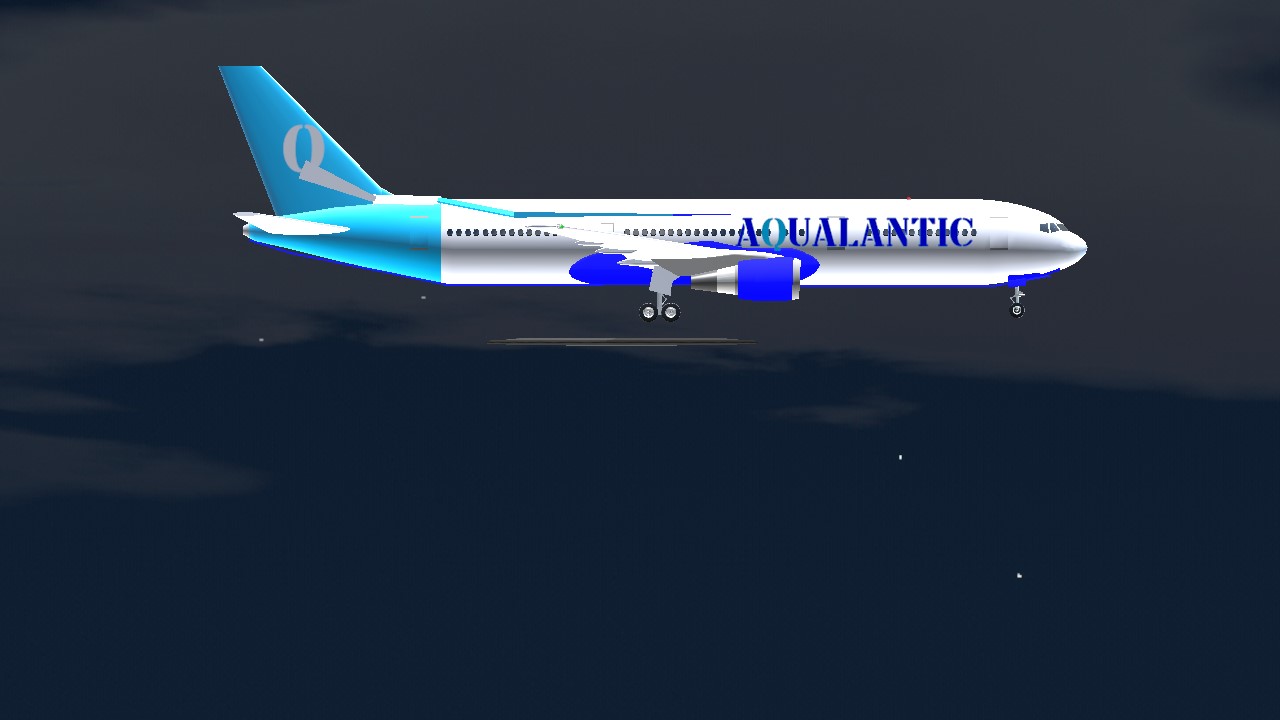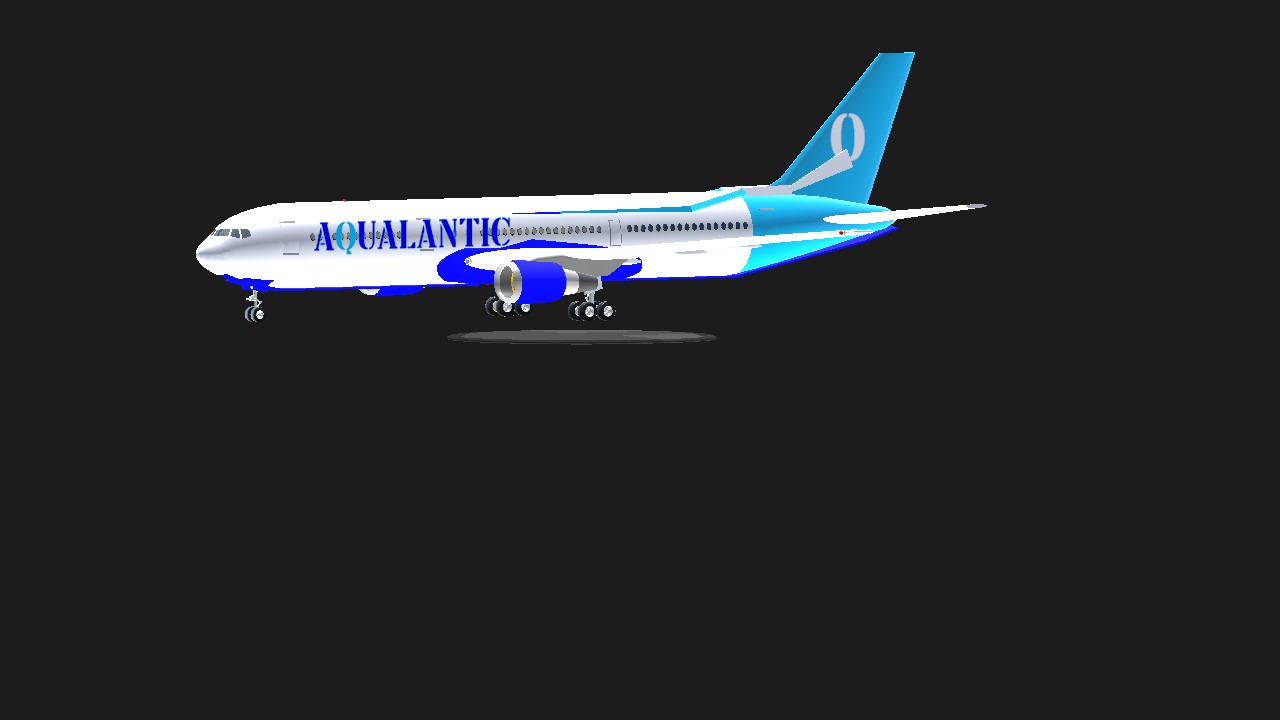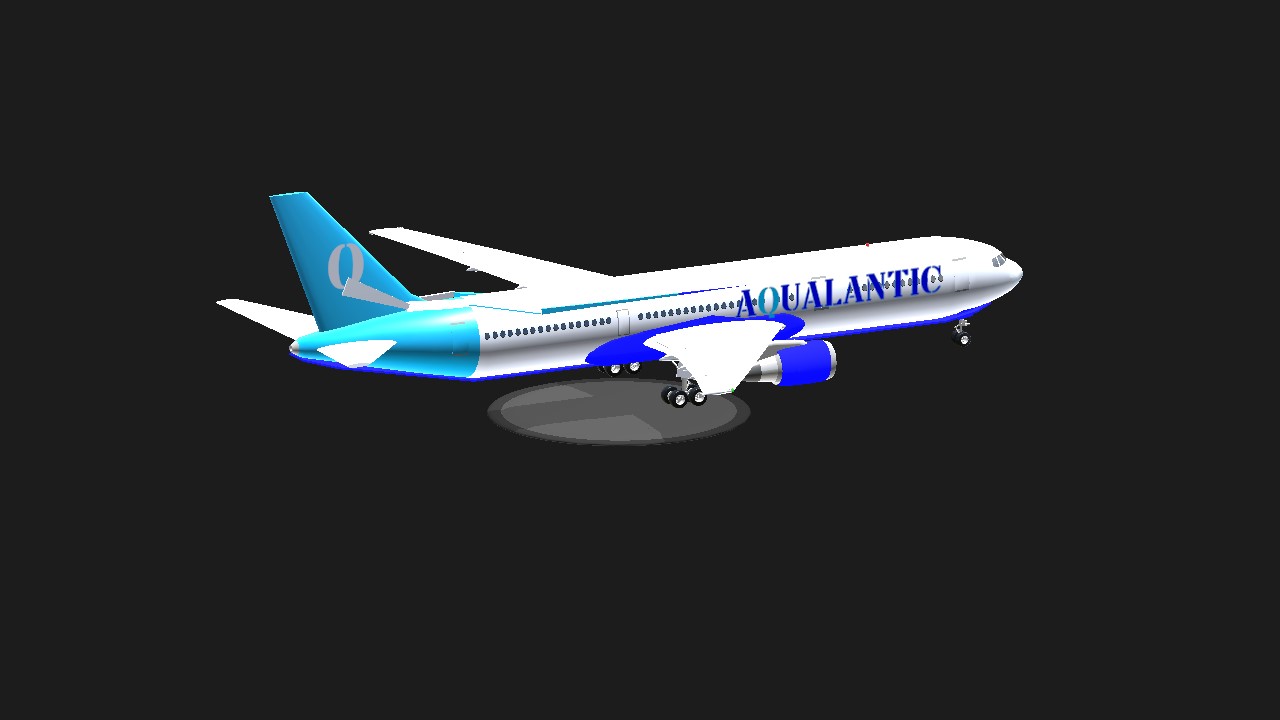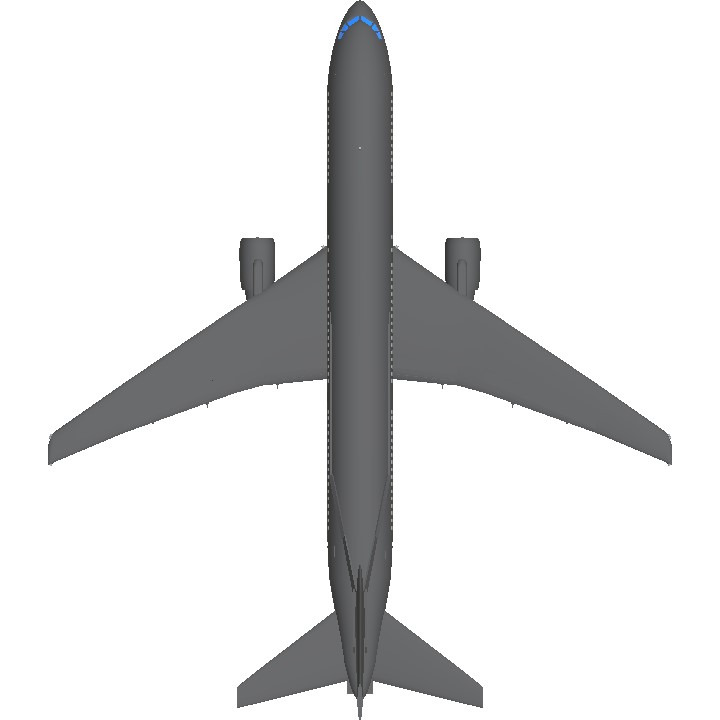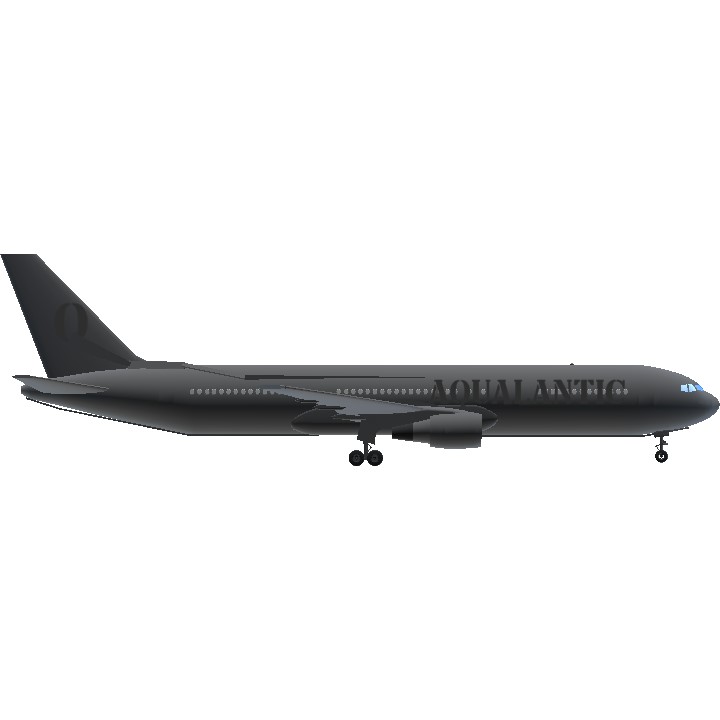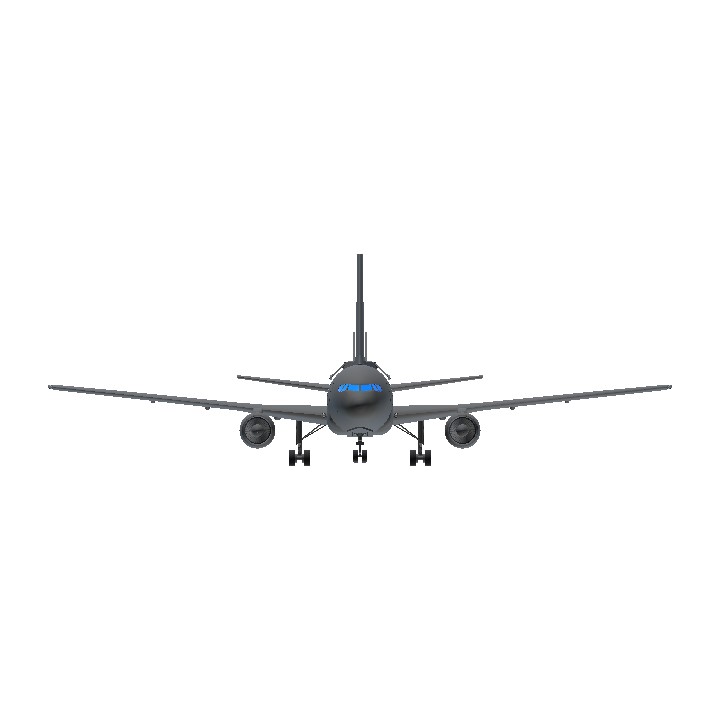British Aqualantic Airlines Is a British owned Airline In the movie Non-Stop. In this movie a British Aqualantic Airlines Flight 10, a 767 is flying on a non-stop route from New York to London. Mid flight a terrorist demanding money texts the hero (Liam Neeson) and demands money to be transferred into an account or else someone will die on the plane. The terrorist does get a dead person and a bomb is discovered in the rear section of the aircraft. The plane's pilot is eventually killed leaving the Co-pilot to fly. The plane starts a descent into an airport in Iceland but as they pass 8,000 feet the bomb detonated killing Zach White. and ripping a hole in the aircraft. The plane lands and the nose gear collapses a second hole comes up near the front and two protagonists save a child from being sucked out into the engines. The plane comes to a stop and passengers and crew evacuate. Not much is known about the airline and it's fleet consists of a Boeing 767 as seen in the movie.
About 767 From Wikipedia:
The Boeing 767 is an American wide-body airliner developed and manufactured by Boeing Commercial Airplanes. The aircraft was launched as the 7X7 program on July 14, 1978, the prototype first flew on September 26, 1981, and it was certified on July 30, 1982. The initial 767-200 variant entered service on September 8, 1982, with United Airlines, and the extended-range 767-200ER in 1984. It was stretched into the 767-300 in October 1986, followed by the extended-range 767-300ER in 1988, the most popular variant. The 767-300F, a production freighter version, debuted in October 1995. It was stretched again into the 767-400ER from September 2000.
Designed to complement the larger 747, it has a seven-abreast cross-section accommodating smaller LD2 ULD cargo containers. The 767 is Boeing's first wide-body twinjet, powered by General Electric CF6, Rolls-Royce RB211, or Pratt & Whitney JT9D turbofans. JT9D engines were eventually replaced by PW4000 engines. The aircraft has a conventional tail and a supercritical wing for reduced aerodynamic drag. Its two-crew glass cockpit, a first for a Boeing airliner, was developed jointly for the 757 - a narrow-body aircraft, allowing a common pilot type rating. Studies for a higher-capacity 767 in 1986 led Boeing to develop the larger 777 twinjet, introduced in June 1995.
The 159-foot-long (48.5 m) 767-200 typically seats 216 passengers over 3,900 nautical miles [nmi] (7,200 km; 4,500 mi), while the 767-200ER seats 181 over a 6,590 nmi (12,200 km; 7,580 mi) range. The 180-foot-long (54.9 m) 767-300 typically seats 269 passengers over 3,900 nmi (7,200 km; 4,500 mi), while the 767-300ER seats 218 over 5,980 nmi (11,070 km; 6,880 mi). The 767-300F can haul 116,000 lb (52.7 t) over 3,225 nmi (6,025 km; 3,711 mi), and the 201.3-foot-long (61.37 m) 767-400ER typically seats 245 passengers over 5,625 nmi (10,415 km; 6,473 mi). Military derivatives include the E-767 for surveillance and the KC-767 and KC-46 aerial tankers.
Initially marketed for transcontinental routes, a loosening of ETOPS rules starting in 1985 allowed the aircraft to operate transatlantic flights. A total of 742 of these aircraft were in service in July 2018, with Delta Air Lines being the largest operator with 77 aircraft in its fleet. As of June 2024, Boeing has received 1,407 orders from 74 customers, of which 1,312 airplanes have been delivered, while the remaining orders are for cargo or tanker variants. Competitors have included the Airbus A300, A310, and A330-200. Its successor, the 787 Dreamliner, entered service in 2011.
Specifications
General Characteristics
- Predecessor [updated]B767-300ER[GE]
- Created On Android
- Wingspan 156.2ft (47.6m)
- Length 180.3ft (55.0m)
- Height 53.2ft (16.2m)
- Empty Weight N/A
- Loaded Weight 96,632lbs (43,831kg)
Performance
- Power/Weight Ratio 0.604
- Horse Power/Weight Ratio 0.031
- Wing Loading 25.0lbs/ft2 (122.0kg/m2)
- Wing Area 3,866.8ft2 (359.2m2)
- Drag Points 27718
Parts
- Number of Parts 517
- Control Surfaces 9
- Performance Cost 3,291

